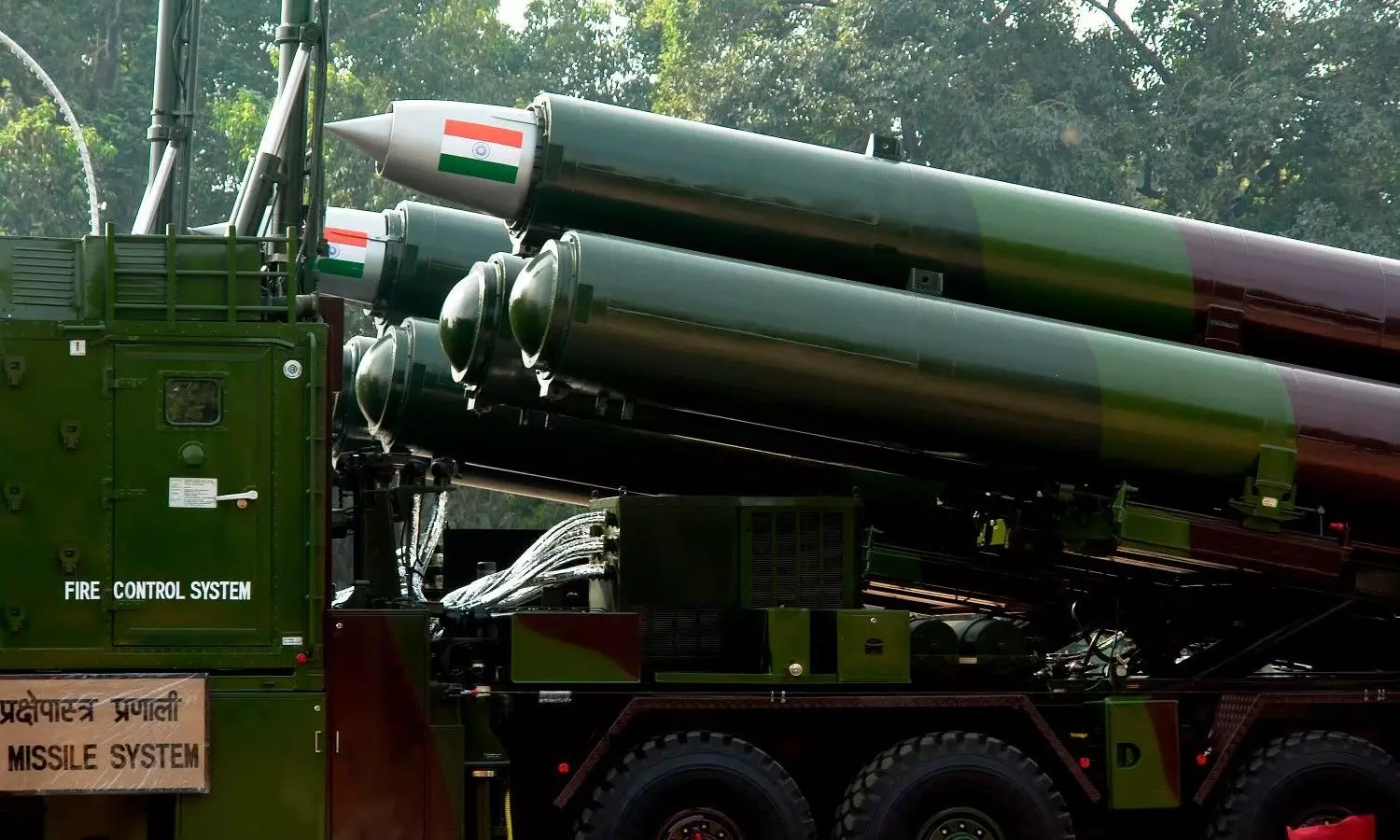
Explained: How 'Sudarshan Chakra' will strengthen India's defence capabilities
At the heart of the Sudarshan Chakra mission is a plan to fuse India's Integrated Air Command and Control System (IACCS) with a cutting-edge missile strike force

Prime Minister Narendra Modi on Friday (August 15) announced the launch of "Sudarshan Chakra Mission" – a fully indigenous air-defence system aimed at protecting India’s key military and civilian installations and delivering a decisive response to any hostile threat.
The move comes amid heightened security concerns involving Pakistan and China in the country.
Also Read: PM Modi’s I-Day announcements: Stronger national security, GST reforms, Rs 1-L Cr job scheme
Indigenous defence technology
In his Independence Day address from the Red Fort, Modi underlined New Delhi’s determination to reduce dependence on foreign technology for defence platforms, urging Indian innovators to develop jet engines domestically for the country’s fighter aircraft.
Although the prime minister did not detail the specifications of the "Sudarshan Chakra" system, experts suggested it could be modelled on Israel’s Iron Dome, known as a very effective missile shield.
Modi said the system would be designed to neutralise enemy attacks and deliver powerful counter strikes, with its protective coverage expanding to ensure the safety of every citizen.
Krishna’s Sudarshan Chakra
Modi's speech came a day ahead of Janmashtami. Drawing inspiration from Lord Krishna's legendary weapon, the Sudarshan Chakra, Modi highlighted how India draws inspiration from its rich cultural and mythological heritage to guide modern defence innovations.
He said the indigenous project will deploy advanced defence technology to protect both strategic and civilian infrastructure, and will have precision strike capabilities.
The mission underscores India's commitment to strategic autonomy, ensuring rapid, precise and powerful responses to any threat, he said.
The announcement follows reports of Pakistan Army chief Field Marshal Asim Munir hinting at possible strikes on Indian infrastructure, including Reliance Industries’ Jamnagar refinery, in the event of a future conflict.
It also comes after Pakistan’s Prime Minister Shehbaz Sharif, in his Independence day address, declared the creation of a rocket force modelled on China’s example.
Also Read: PM Modi hails RSS in Independence Day speech, lauds its role in nation building
Rashtra Suraksha Kavach
Modi noted that the new technology platforms under the "Rashtra Suraksha Kavach" initiative will be deployed to protect "every place of national significance, critical infrastructure such as hospitals, religious sites, and other sensitive locations with emerging technologies".
"By 2035, I want to expand, strengthen, and modernise this shield. Drawing inspiration from Lord Krishna, we have chosen the path of the Sudarshan Chakra. The entire system should be researched, developed, and manufactured in India," Mr Modi said in his Independence Day speech.
"Every citizen must feel protected," the Prime Minister said.
Comprehensive air defence
At the heart of the Sudarshan Chakra mission is a plan to fuse India's Integrated Air Command and Control System (IACCS) with a cutting-edge missile strike force.
The IACCS is a fully automated, real-time air defence command system that integrates various sensors, radars, and weapon systems to provide a comprehensive air situation picture.
It enables seamless coordination between air, land, and naval assets, and ensures a rapid response to aerial threats.
The IACCS, which integrates the Army, Navy, and Air Force air-defence networks, played a key role in maintaining air superiority during Operation Sindoor, preventing Pakistani missile penetration for nearly 100 hours.
Also Read: From pandemic recovery to security onslaught: Comparing Modi’s I-day speeches last 5 years
Collaborative defence project
There is not much known about the operational details of the mission at this time.
However, an NDTV report quoting sources said the Sudarshan Chakra will go beyond missile interception, incorporating precision counterstrike capabilities and anti-cyber warfare measures to neutralise digital threats.
The project is expected to be a collaboration between defence research agencies, the armed forces, and private-sector innovators, aligning with the government’s Aatmanirbhar Bharat vision for self-reliance in critical defence infrastructure.
This was Modi’s first Independence Day address after Operation Sindoor, which he hailed as proof of India’s self-reliance in defence, noting that indigenous weapons enabled decisive, independent action against terror infrastructure in Pakistan and Pakistan-occupied Kashmir following the April 22 Pahalgam attack.

